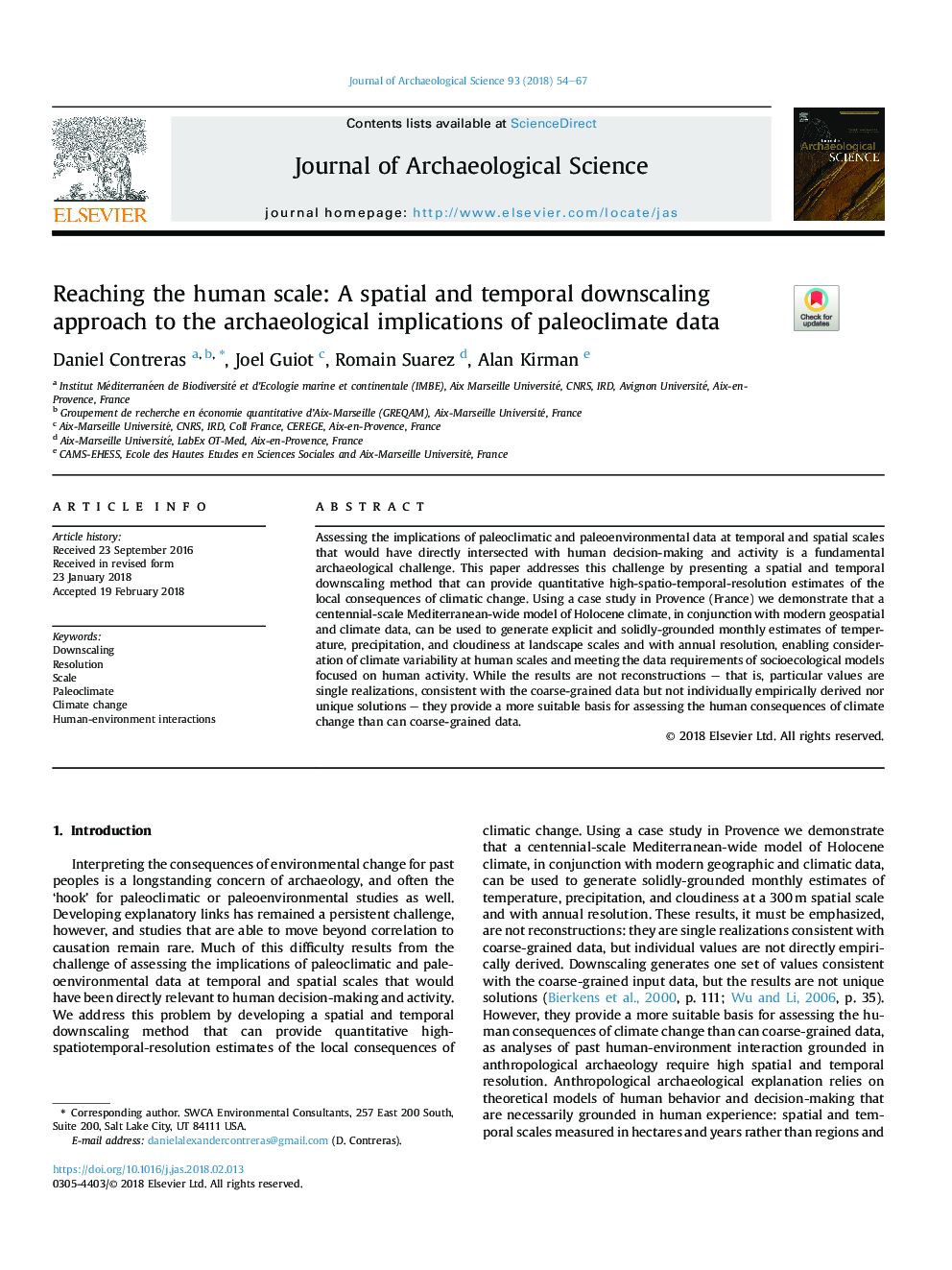| Article ID | Journal | Published Year | Pages | File Type |
|---|---|---|---|---|
| 7440895 | Journal of Archaeological Science | 2018 | 14 Pages |
Abstract
Assessing the implications of paleoclimatic and paleoenvironmental data at temporal and spatial scales that would have directly intersected with human decision-making and activity is a fundamental archaeological challenge. This paper addresses this challenge by presenting a spatial and temporal downscaling method that can provide quantitative high-spatio-temporal-resolution estimates of the local consequences of climatic change. Using a case study in Provence (France) we demonstrate that a centennial-scale Mediterranean-wide model of Holocene climate, in conjunction with modern geospatial and climate data, can be used to generate explicit and solidly-grounded monthly estimates of temperature, precipitation, and cloudiness at landscape scales and with annual resolution, enabling consideration of climate variability at human scales and meeting the data requirements of socioecological models focused on human activity. While the results are not reconstructions - that is, particular values are single realizations, consistent with the coarse-grained data but not individually empirically derived nor unique solutions - they provide a more suitable basis for assessing the human consequences of climate change than can coarse-grained data.
Related Topics
Physical Sciences and Engineering
Materials Science
Materials Science (General)
Authors
Daniel Contreras, Joel Guiot, Romain Suarez, Alan Kirman,
